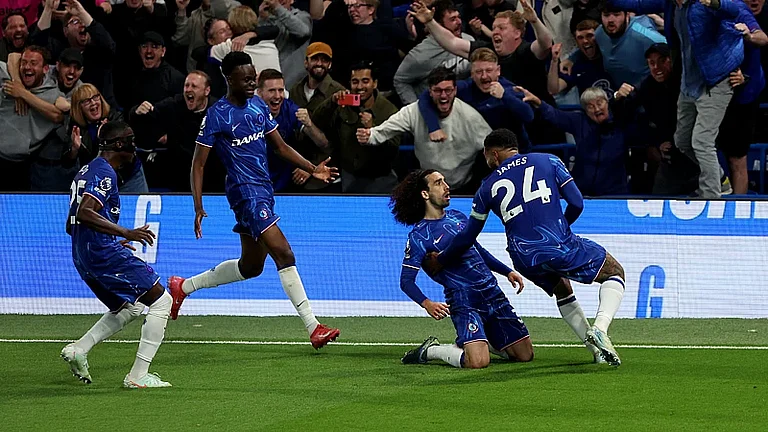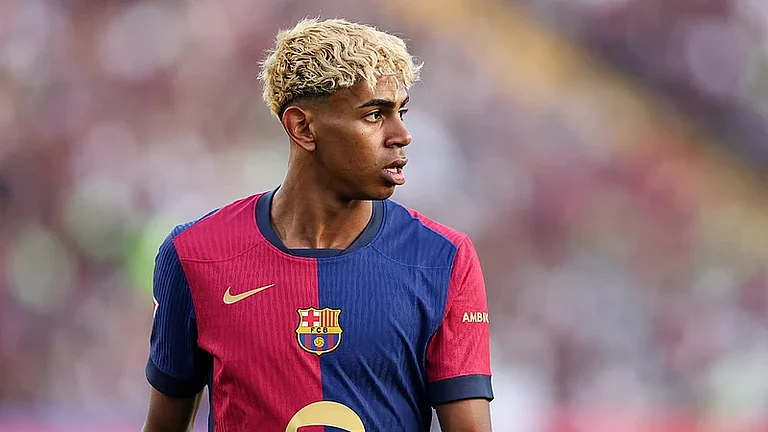Once a stronghold of the Congress, Northeast India has witnessed many political upheavals post-2014. In Meghalaya, Tripura and Nagaland, all going to the polls early next year, the Congress had a total of 47 MLAs in the 2013 Assembly elections out of the 180 seats altogether. The number reduced to 21 in 2018, where, other than Meghalaya, in the other two states, the party could not manage to send a single legislator to the assembly.
In Meghalaya, even though the Congress had the highest number of seats, the Conrad Sangma- led NPP formed a coalition government with the help of the United Democratic Party (UDP), the People’s Democratic Front (PDF), the BJP, the Hill State People’s Democratic Party (HSPDP), and two Independent MLAs. The Congress became the main opposition. However the Congress number eventually dwindled to 17, following resignations, the deaths of MLAs and subsequent by-polls.
The Congress took a major blow when Dr. Mukul Sangma, leader of the opposition and two-time chief minister, jumped ship to the Mamata Banerjee-led Trinamool Congress, a new entrant into the politics of the Christian majority state. 11 legislators followed Sangma in November 2021 to TMC, reducing the party from the main opposition to a signboard. This includes eight MLAs from the Garo Hills and four from the Khasi and the Jaintia hills. With this development, the TMC, despite not winning a single seat in the 2018 state elections
became the principal opposition in the 60-member Meghalaya assembly.
ALSO READ: Bharat Jodo Yatra: History In The Making
In February this year, the remaining five MLAs of the Congress pledged support to the BJP-backed Meghalaya Democratic Alliance (MDA). However, the party has claimed that though it has lost its leaders, it has not lost its popularity on the ground. Talking to Outlook, Sanjay Das, General Secretary of the Meghalaya Pradesh Congress Committee (MPCC), said, “On the ground, we have not lost any popularity. It is only the leaders who have left us. We have lots of young and educated members and prospective candidates joining us. We are giving a fresh lift to the party.”
The Congress party has always been a part of the Meghalaya government since the first Assembly polls in 1972. The party ruled the state for 15 years from 2003 to 2018 before the National People’s Party took over.
Das, however, has said that with Dr. Sangma’s departure, the party has faced a major setback in the East Garo Hills, the home turf of Dr. Sangma and, traditionally, a Congress bastion. “It’s a big setback for us that Dr. Mukul has left us. We lost all our MLAs in that process. However, the grassroots base of Congress is still intact in most places.”
ALSO READ: Bharat Jodo Yatra: Poised To Make A Mark
The party said it is trying to re-organise where it does not have a base. The main poll plank for the Congress is the corruption charges against the NPP-led government of Conrad Sangma. According to Das, the Congress campaign will be based upon factors like development, anti-corruption, employment generation, livelihood programmes, rural development etc. “Now that Dr. Sangma has left the party, the young, new faces have got a space in the system. In the Garo Hills, we have got an IIT graduate, a doctor, and so on.” he said.
The new entrant in Meghalaya politics, the TMC, though making a lot of noise, is not well- placed on the ground claimed the party. Toki Blah, a political observer from the state, said most Congress candidates fighting the 2023 polls do not have dynastic backup. “The most promising fact is that the party has given a chance to a lot of young faces. Whether or not they win is a different issue. Many of them are quite educated,” Blah told Outlook. However, Blah said that the prospects of the Congress in the polls, especially in the Garo Hills, are quite unclear as of now, as the party is yet to come up with the manifestos and final list of candidates.”
In Tripura, where the ruling BJP changed its chief minister, Biplab Kumar Deb, mid-term, and replaced him with Manik Saha, the Congress is fighting to bring back lost glory. It opened its account in the state way back in 1963 in the first general election with Sachindra Lal Singh becoming the first chief minister of the state. However, after forming the government thrice from 1963 to 1977, the Communist Party of India (Marxist) rose to power. Apart from that the Janata Party and Congress for Democracy rose to power each once. The Congress formed the government four times in the state. However, it is the CPM that mostly dominated the state’s politics before the BJP rose to power in 2018 with Deb as the chief minister.
In the 2013 Assembly polls, the Congress party had a vote share of 36.5% with 10 Assembly seats. It was the main opposition party in the state. However its vote share came down to 1.79% in the 2018 assembly polls, with no seat in the assembly. In 2016, a major setback was when its sixth-time legislator, Sudip Roy Barman, left to join the TMC and, then the BJP, in 2017. With Barman, six other Congress MLAs joined the TMC. They all also followed Barman when he joined the BJP later in 2017.
However Barman who was inducted into the BJP government as the health minister in 2018 was ousted from his ministry a year later for his difference with the then CM, Deb. He also resigned as an MLA from the Agartala Assembly seat and came back to the Congress. In June this year, he managed to retain his Agartala seat in the by-polls. The BJP won in all the other three seats of Town Bardowali, Surma and Jubarajnagar. After returning to the party, Barman is trying to forge an alliance of opposition parties to oust the BJP from power.
Talking to Outlook, Barman said, “The Congress had 46% vote share in the past election (2013). The BJP formed the government with a vote share of 1.4% (CPM vote share was 42.2%). Many leaders and former members are returning to the party. Hopefully, the BJP will be reduced to the position they were in earlier.” Barman has been urging opposition parties to unitedly oppose the BJP government led by Saha. According to him, the party is keeping all its options open regarding alliances with opposition parties to defeat the “unholy forces”.
Earlier this month, the AICC general-secretary in-charge of Tripura, Ajoy Kumar, in a letter to the Pradesh Congress has mandated a ticket aspirant to enrol at least 5,000 members to qualify for nomination. “This is an instruction to ensure that Congress leaders reach every doorstep of the common people. We have to go from house to house,” Barman said.

Pinaki Das, a political analyst and senior journalist from Tripura, said, “Sudip Roy Barman is trying to unite the opposition because he has no options left. He played a vital role in bringing the BJP to power. All his six MLAs who had gone to TMC along with him later joined the BJP before the 2018 polls. Now that he has left the BJP and has moved back to the Congress, the party is gradually regaining support.” Das feels that being dropped to a vote share of 1.79% and then getting back one seat in the by-poll shows that the Congress is reviving in Tripura.
For Das, the Congress has a stronghold in the Kailashahar constituency where the current Congress chief, Birajit Sinha, was a legislator till 2018. The Agartala seat of Barman is also a safe den. He said the Congress also has a chance of winning in the Town Bardowali seat held by Saha, the current chief minister of the state. “Internal dissent might lead to a Congress win in this seat because people didn’t like a former Congress member being made a CM, that too mid-term.” he said.
Even though Barman has been saying that his party would do “whatever is needed to defeat the BJP”, whether or not it would bring two arch rivals, the CPM and the Congress, together is doubtful.
The Congress was in opposition when the CPM-led Left Front governed for the last 25 years, before the BJP came to power. During this period, there were many violent clashes between the two parties. According to Das, an alliance with the CPM might not go well for the Congress and, worse, it might help the BJP to gain brownie points.
“When Barman and the others left the Congress to join the TMC and later the BJP, they used to say that the Congress could not
remove the Left Front from power because AICC did not want to. That it sacrificed Tripura to the Left Front as the CPM supported the UPA or Congress at the centre. Now if they again form an alliance, then the BJP will campaign against them using the strong Congress sentiments against CPIM and those who were victims of 25 years of Left rule in Tripura.” he said.
The Congress in Tripura does not have a tribal vote base and is keen to ally with the Tipraha Indigenous Progressive Regional Alliance (TIPRA) or Tipra Motha, an emerging tribal party, led by royal scion, Pradyot Bikram Manikya Deb Barma. The Congress has extended its support to the demand of the party for a Greater Tipraland for the tribals of Tripura by terming it ‘constitutional.’ According to Das, this support might not go well with the Bengalis living in Tripura who constitute 65.7% of the total population. It might hamper the Congress performance which is going to fight in some of the seats dominated by the Bengali population.
In the other poll-bound state of Nagaland, the Congress is urging a ‘secular alliance’ of the opposition to oust the BJP-supported United Democratic Alliance. The party which once ruled the state for almost 15 years during its worst phase of militancy, drew a blank in the 2018 Assembly polls. It had 8 MLAs in the 2013 Assembly polls. The party, which contested in 18 seats in the 2018 polls, is eyeing to contest in all 60 seats this time.
The Congress is trying to make the ‘Naga political solution’ a poll plank along with an attack on the Hindutva politics of the BJP in the Christian-dominated state. In August this year, Nagaland party in-charge, Ajoy Kumar, alleged that the BJP was using armed groups to win the 2023 polls by keeping the issue alive despite signing two framework agreements with the NSCN (IM) and the “Agreed Position” with the Naga National Political Groups (NNPGs).
Apart from the Naga issue, the Congress is also accusing the BJP of intentionally changing the demographics of Nagaland state by ‘weakening Christians and promoting and celebrating Hindutva in Nagaland.’ Its president, K. Therie, has urged for a ‘secular alliance’ with like-minded parties to defeat the BJP.
However, the prospect of the party seems bleak given the fact that the Neiphiu Rio-led United Democratic Alliance has managed to have an opposition-less government in Nagaland, riding on the very sentiments of the Naga political issue.
(This appeared in the print edition as "Crawling Back To Power?")


























